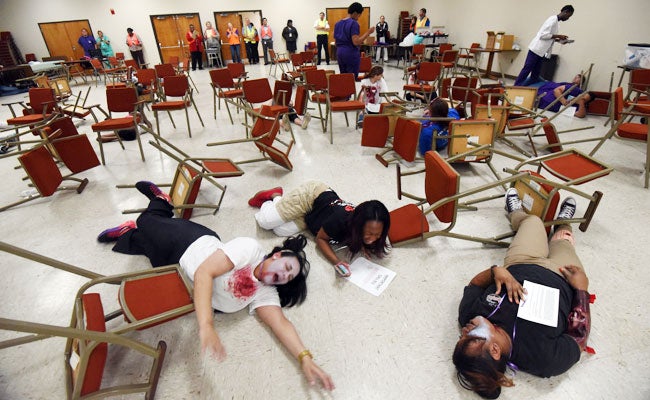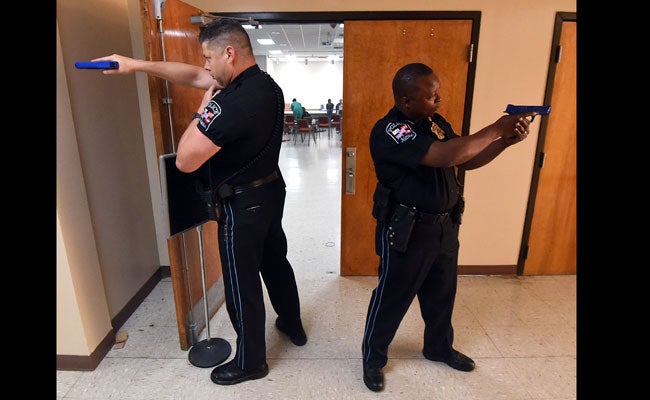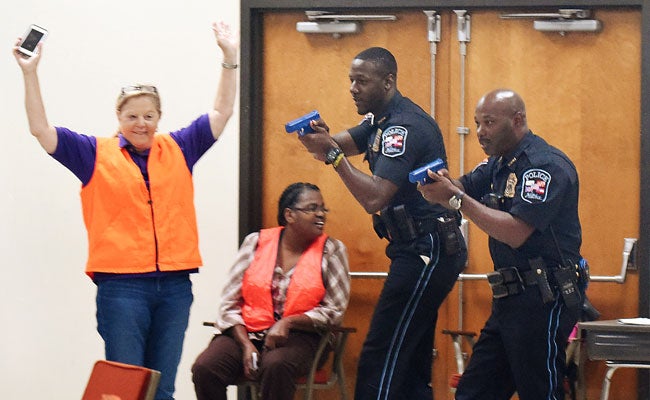Local responders participate in preparedness exercise
Published 12:00 am Tuesday, April 12, 2016
NATCHEZ — The scene was carnage.
Blood-soaked students were scattered across the floor of the Alcorn State University School of Nursing auditorium, some with appendages bent at odd angles, others flat on their backs, dead.
First responders moved among them, providing triage to those who were wounded, checking the pulses and moving on from others too late to save. In the back corner of the room, nursing students treated those they could.
On the stage in front of the room, Yolanda Bridges stretched out a burned and bleeding arm to pick up the part of her leg that had been amputated below the knee.
“I think I’m going to need some triage, or I’m going to bleed out,” she said with a grin. Her companion in crisis, Renada Newell, likewise fidgeted with the arm she’d lost following an explosion earlier that morning.
Luckily for Bridges and Newell — and the rest of the students in the room — it was only a drill, and all the blood, amputated limbs and shrapnel protruding from bodies were purely for aesthetics.
“We picked out our amputations because as a nursing student I thought this would be one of the first things a person could be tagged for triage for treatment,” Bridges said. “I have a great chance of surviving, as long as I get treatment soon.”
The drill — a joint effort between ASU, the area’s first responders and Merit Health Natchez — was to stress-test the university’s active shooter policies and the response times of the agencies involved.
The scenario in play was a former ASU student who — seeking out a former love interest — backed a bomb-laden truck up to the school before blowing it up and taking a gun to the crowd to seek revenge against a former lover and his six new girlfriends, Natchez Police Department Capt. Tom McGehee said.
None of the responding agencies knew the call would be coming Monday morning, he said.
The only exception to how the response would have started was that eight off-duty police officers were told to report to ASU in full uniform that morning.
“We had them come here and wait in a room,” McGehee said. “We didn’t want to have on-duty cops beating the streets to fly down here.”
The drill did find some kinks in the system, he said, such as in some cases where those who needed to make a call during the response had the wrong phone number.
“This helps iron those things out,” McGehee said.
After the scene was cleared at Alcorn, a busload of the surviving “victims” was taken to Merit Health Natchez.
For Alcorn, the drill allowed students to develop skills they need to complete a leadership course in emergency management triage, ASU Professor Diane Blanchard said.
“The students had cards they created to identify and diagnose injuries, and it tested how we would interface with local hospitals,” Blanchard said. “We had the tags on everybody before 15 minutes was up.”
Debra Spring, dean of the school of nursing, said she thought the students did a good job during the drill.
“It is much better to do that as a simulated situation rather than hands-on,” Spring said. “It helps prepare students in a safe, non-threatening environment so that when they are faced with that situation, they can feel competent in their skills.”









